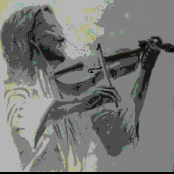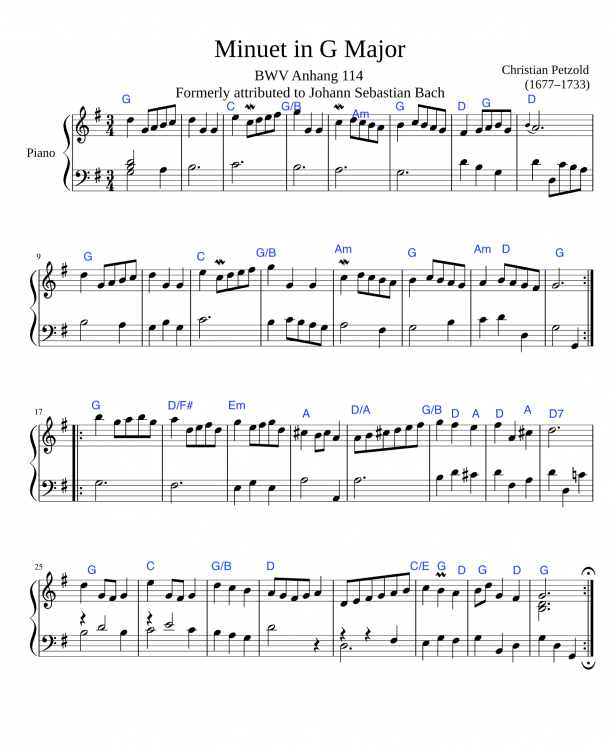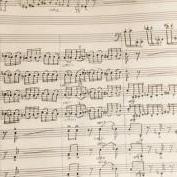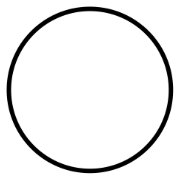Leaderboard
Popular Content
Showing content with the highest reputation on 09/02/2020 in all areas
-
Here is my first symphony. I wrote it last month in the style of second half of XVIII centuries. I analize some Haydn and Mozart early symphonies to grab some ideas and make it coherent with that period, regarding form, time signatures, tempos and so on. It has four movements: Adagio-Allegro (4/4) Andante (2/4) Minuet (3/4) Presto (3/8) Duration: 20-21 minutes Adagio-Allegro Introduction in Dm->Am->Dm (Adagio). Allegro in sonata form theme A in DM theme B in AM. Development: first section based in theme A, second section based on a combination of A and B. Andante With lyrical character and the melody and countermelodies moving all through the wind section. It has a ternary ABA form. A in the subdominant key GM and B in Am, motif derivated from A, but contrasting in texture and key. Minuet Minuet in DM Trio in GM The trio section is the only part of a symphony I took from one of my previous compositions. I rearranged and adapted a Minuet for piano a wrote a few months ago and posted on the forum. Presto Rondo form AABA'CABDA A in DM B in AM A' in Dm C in Dm After C, A appears in de subdominant key (GM) and B on the tonic (DM). D modulating DM->Dm->Am->Dm. C and D section close with and inversion of the opining A motiv inverted and aumented played in unison. A in the tonic closes the movement. The last movement is the one I found more difficult to write, because of the form. Any feedback either positive, negative or constructive are welcome.3 points
-
This piece was written to cope with the passing of a dear friend struck with covid, a young person whose loss will linger with her family and friends forever. There was a hope she might survive but alas, didn't. It was played (in the form posted here) at her funeral. Under ordinary circumstances it might seem over sentimental - and probably is - not like my usual compositions at all. But it had to be as it is. I posted it here because it would probably need a conductor to manage the tempo changes. For an orchestra of muted strings (aside from a brief solo)3 points
-
This piece depicts a dead soul in a living body. thanks for your thoughts2 points
-
2 points
-
Just like I have learned in buddhism to trust teachers I should accept that here as well, you are further on the path than me and you think that so I trust you2 points
-
Hello! Here is a new piano sonata allegro movement that I've written during the pandemic. I'd welcome any feedback you might have. 🙂 Dan1 point
-
There's a couple of cross-relations in the score that I don't know if you intended - they're mostly just passing tones though so it's not like they totally jumped out at me in the recording as sounding wrong. In m. 10 you have the violins playing a passing Gb while the cellos and basses play a passing G natural (also happens the same way in the very last measure). The Gb's seem to dominate to my ear. Also in m. 31 and 32 the violas play a Gb while the bassoon plays a G natural right after. In m.44 beat 2 you have a D natural in the bassoon while the 1st violins and the cellos play Db's - that one really jumped out at me and I heard it as a 'wrong' note in the recording. Aside from that I enjoyed the lush string voicings and your choice of chords is superb - really beautiful music. I like the way you foreshadowed the bassoon melody by introducing it first in the strings. I really like the chord you have at m. 75 - unique choice using a 6/4 voicing of a major 7th chord. Thanks for the music!1 point
-
Y this style I meant baroque. Guide tones of a chord are the third. Encause it tells you if it’s minor or minor, and the seventh which tells you if it is dominant or not. But this you will see from romanticism on.1 point
-
This is great, I really enjoyed it: tasteful orchestration and nice lyrical parts passed between Bassoon and strings.1 point
-
@Hendrik Meniere, I'm happy you like that, and thank's a lot for the detailt comments for every movement. It took me a lot of hours to get it finished and the last movement was the harder one, because last movements from Haydn and Mozart are the ones that changes the most between their first to last symphonies. In the first symphonies finale is extremely short and quite simple in form. In last symphonies Finales are much longer and complex, and the counterpoint is breathtaking, specially in Mozart symphonies, which is totally out of my level. So I decided to write something in between their first and last symphonies. The last part I wrote was the introduction to the first movement. I didn't wrote it at first, because a lot of symphonies don't even have it, but I like the contrast of a dark slow introduction in the paralell minor, which makes the main theme even brighter when it comes, like in the introduction of Haydn's last symphony n.104, one of my favorite introductions ever.1 point
-
Yes i agree with Hendrik, also you forget sometimes to put rests in measures that are not being used. Great composition 🙂1 point
-
Indeed very classical. I think you clearly obtained a very classical symphony therefore accomplished your goal, it reminded me to the London symphonies of Joseph Haydn. Movement 1 I loved the dark introduction in minor keys. The contrast from the introduction into the first theme is clear and very well accomplished. Love the development section especially when it becomes dark. The coda is simple as it would be in that period. Movement 2 As you mentioned very lyrical, I liked how you gave importance to the woodwinds (even though when I listen to Haydn and early Mozart symphonies I always feel that the strings have the important part and the woodwinds are mere decoration). I do not criticize you because of using the woodwinds, on the contrary , I love that you give an important role to the woodwinds. The B section would be more in the style of Haydn with the stings the main melody. Nice coda. Movement 3 The minuet is perfect (for me) even though I prefer scherzos (but I understand you what to do in the early classical style so no scherzo). I liked how you use the brass instruments as they would use them in the time. The trio is beautiful (therefore I have not much to say except you've done a very good work). Movement 4 Movement 4 is my personal favorite. It reminded me a lot of Haydn. The main theme was easy to remember (typical to the A themes of rondos). One thing I always felt of early classical symphonies is that the last movement always feels like if it was rushing to end itself, and I had the same feeling in your last movement (again an accomplishment is creating a good early classical symphony) The coda was amazing and very good. In general I think is an amazing symphony that accomplishes its mission: recreating a symphony in the early classical style. Its easy to digest and the movements flow very smoothly. Great piece Guillem! You should be proud.1 point
-
I hope this doesn't turn into one of those bitter arguments about tonality and atonality that I've had the *privilege* of reading in some of the old threads. I think the two approaches are often quite useful in combination. Sometimes the melody is more diffuse and sometimes it can be more dense and attention grabbing. The effect of various different kinds of melodies on the spectrum from tonal to atonal can be useful in various different kinds of musical contexts and not all melodies have to be "tunes" even while still mostly keeping to the tonal side of the scale. Examples: War of the Worlds - Opening Scene Pandora's Fanfare1 point
-
I don't think you ever will, your instincts and tastes never go away. If you're afraid that learning the more technical aspects of music and composition will hinder your creativity I'll challenge you to do this: Find one person who learned music theory or harmony or counterpoint or anything like that who truly believes it set them backwards in their creativity. I've never met anyone who said learning music theory made them a worse composer, but I've met plenty who said they resisted for the longest time and when they finally did, they wished they'd learned it sooner. Anyone who says otherwise is either lying or doesn't know what they're talking about. Since when has anyone ever hurt themselves by learning something?1 point
-
I wouldn't say I ever been properly "trained" either. Most of what I do is trying to emulate something I've heard before. The best resource is of course scores, which you can find for free for most classical composers on imslp.org. Since you've mentioned Debussy as an inspiration, here's a link to his page: https://imslp.org/wiki/Category:Debussy%2C_Claude. Also, listen to as much music as you can, and when you find something you really like, get your hands on the score and study it like crazy to figure out how it works. From a technique standpoint, I guess I tend to think of music in layers, like melody, countermelody, accompaniment, chords, bass etc. Try to break you're music down into these layers, and experiment with using each instrument in the different layers. When you study scores, try to analyze them in this manner as well by imagining what layer the composer intended for them.1 point






.thumb.png.8b5b433a341551e913a34392660bc95b.png)

